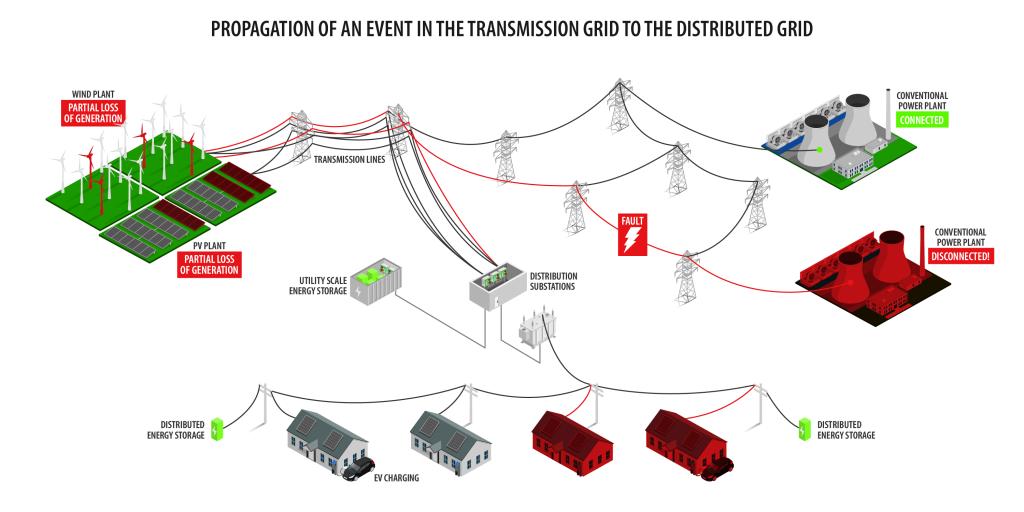
As the power grid transitions from a system dominated by electric machines to one that relies on power electronics, particularly inverters, the grid's physical characteristics are rapidly evolving. This evolution results in new phenomena which occur on a faster timescale, including transient changes in voltage or current, high-frequency oscillations, and complex control interactions. These grid events have not been well understood or explored. Electromagnetic transient (EMT) analysis is a key to addressing these emerging challenges, yet there are gaps in development of new EMT models and software, as well as in understanding of its applications:
- Models: Available types include high-fidelity or detailed models, aggregated models, and average-value models. However, it remains unclear which approach is most well suited to specific types of studies.
- Software: Current EMT simulations are slow and difficult to apply to larger portions of the grid. Most of the studies performed today are limited to small systems, using aggregated or averaged models. Further EMT software development is needed to enable scaling up and speeding up analysis for covering much larger power grids with detailed models.
- Applications: Utilities and system operators need a better understanding of the types of studies that require EMT simulations to provide greater accuracy.
The EMT research group at Oak Ridge National Laboratory is at the forefront of mitigating these gaps and challenges through impactful innovations.
The long-term goal is creating the next-generation EMT simulation software. ORNL simulation software, called RE-INTEGRATE, focuses on growing capabilities to perform near real-time simulation of millions of power grid buses with hundreds of thousands of inverter-based resources, or IBRs. IBRs may be present in variable-frequency drives, high-voltage direct current (HVdc) systems, wind power plants, solar power plants, energy storage systems, hydrogen-based plants and hydropower resources. Additionally, research seeks to understand the different uses for EMT simulations in planning, interconnection, operational and post-event replication studies. The next step is to identify the corresponding models needed for each application.
Some of the approaches taken include:
- Replicating events observed in the power grid using detailed EMT models
- Developing numerical simulation algorithms that explore the characteristics of differential algebraic equations and matrices to speed up EMT simulations
- Utilizing emerging computing architectures (such as GPUs, heterogeneous CPU/GPUs, and quantum computing frameworks) to speed up EMT simulations
- Applying artificial intelligence and machine learning algorithms for automation and partitioning within simulations, as well as for identification of where EMT needs to be performed
- Honing different EMT simulation applications such as planning of large-scale HVDC grid systems, design of new hybrid photovoltaic (PV) – energy storage system (ESS) plants, regional grid integration of EV chargers, and post-event replication in power grids with IBRs.
Impact
The research group’s activities have been featured in recent news articles and podcasts:
- New software provides advanced grid simulation capabilities
- Researchers design cost-efficient utility-scale solar plant that enhances grid stability
- Researchers design cost-efficient large solar plant that enhances grid stability
- This solar + storage project could be a US grid game changer
- ORNL demonstrates power of new modeling approach to understand faults in the modern electric grid
- New Algorithms Push Toward High-Fidelity EMT Modeling for Grid Data Analysis
- Taking On Renewables’ AC/DC Disconnect
ORNL researchers are actively engaged in multiple North American Electric Reliability Corporation (NERC) working groups and task forces as well as technical committees of the Institute of Electrical and Electronics Engineers, or IEEE. ORNL organizes EMT simulation workshops in collaboration with Department of Energy (DOE) and North American Electric Reliability Corporation (NERC).







